Astronomy Worksheets
Our astronomy worksheets teach students the celestial bodies moving across the sky.
Ten Different Astronomy Worksheets
Ten different astronomy objectives teach kids the fun of watching the night sky.Compare Earth's Rotation and Revolution
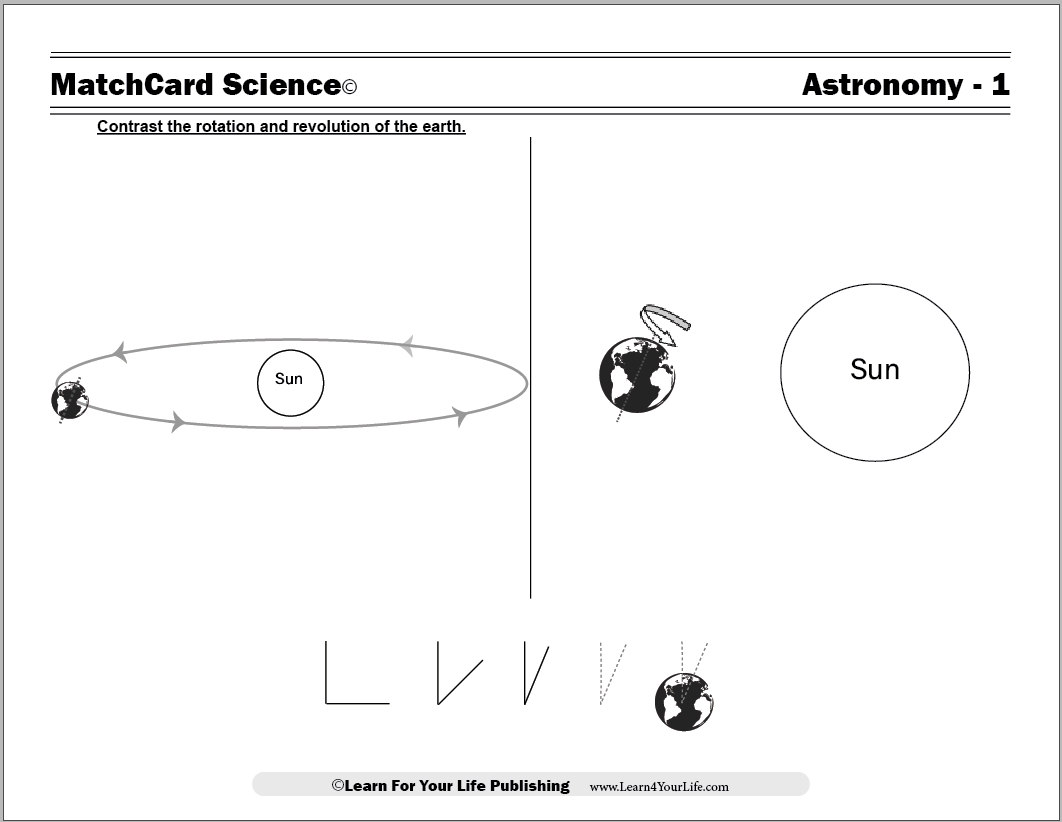

MatchCard #1: Contrast the Earth's rotation and revolution and the effect of each.
Read More: Earths Rotation and Revolution
Planets in Our Solar System
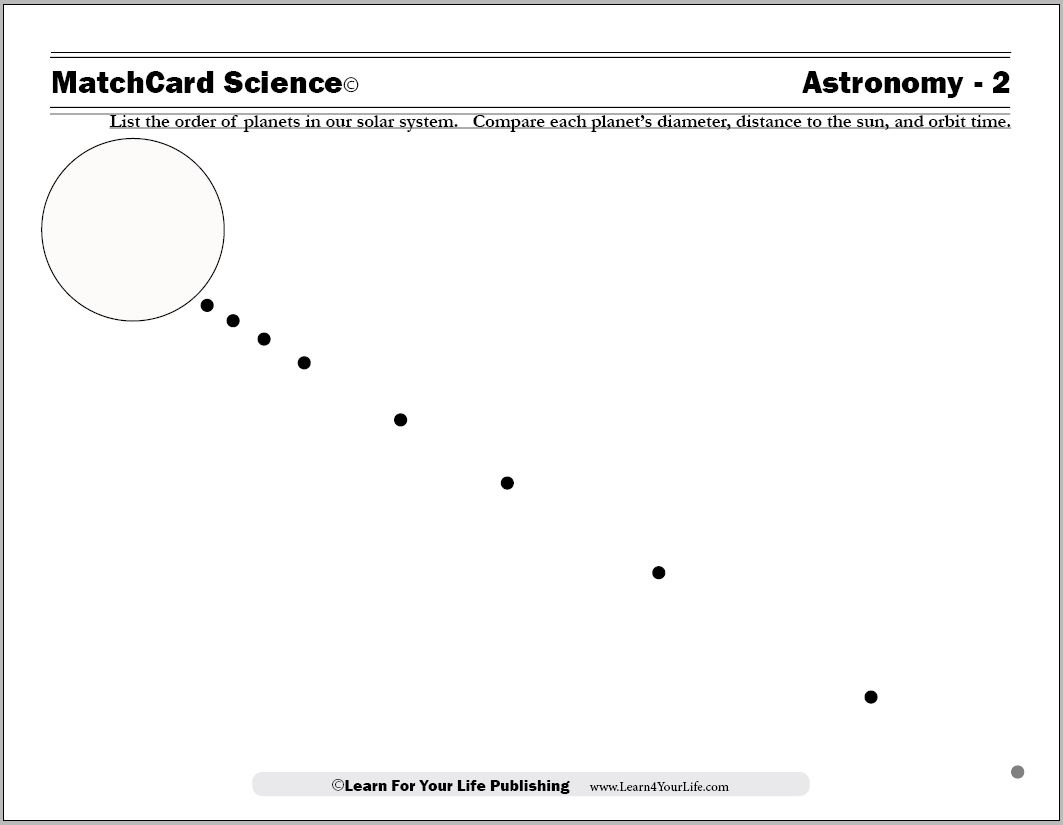

MatchCard #2: List the order of planets in our solar system. Compare each planet's diameter, distance to the sun, and orbit time.
Read More: What's in Our Solar System?
What Is A Planet
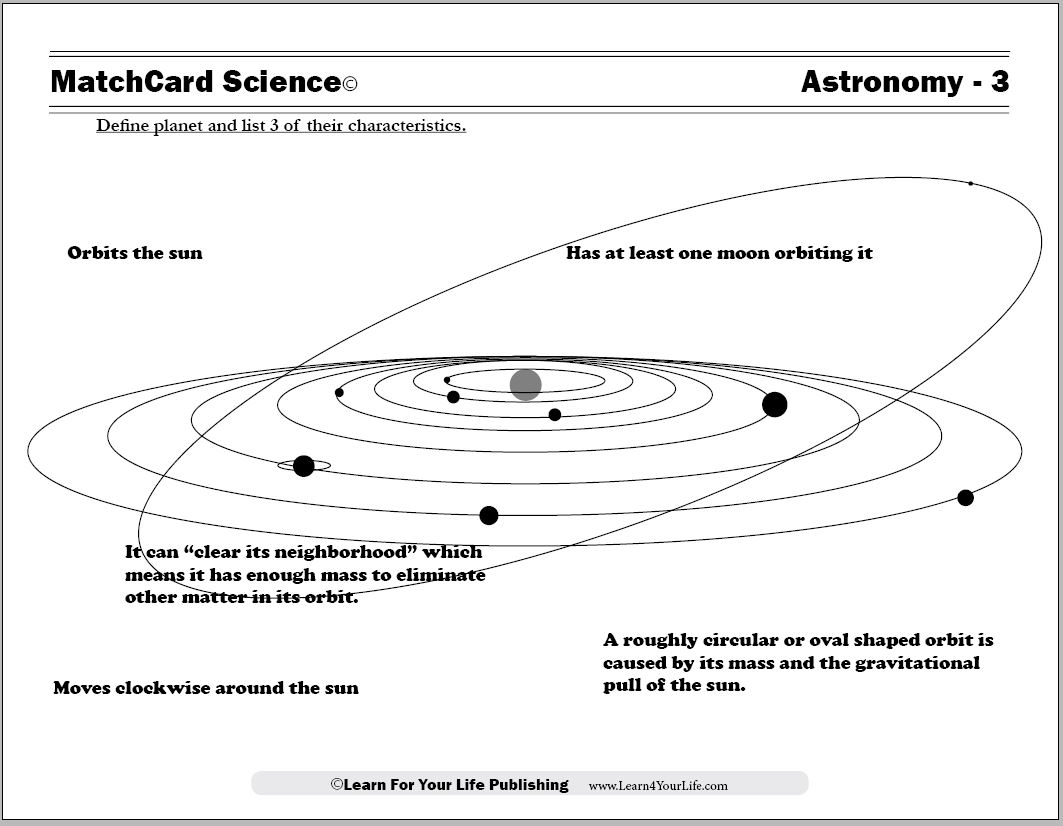

MatchCard #3: List the three characteristics of planets. Investigate if Pluto is a planet or not.
Read More: Definition of A Planet
Lunar Phases
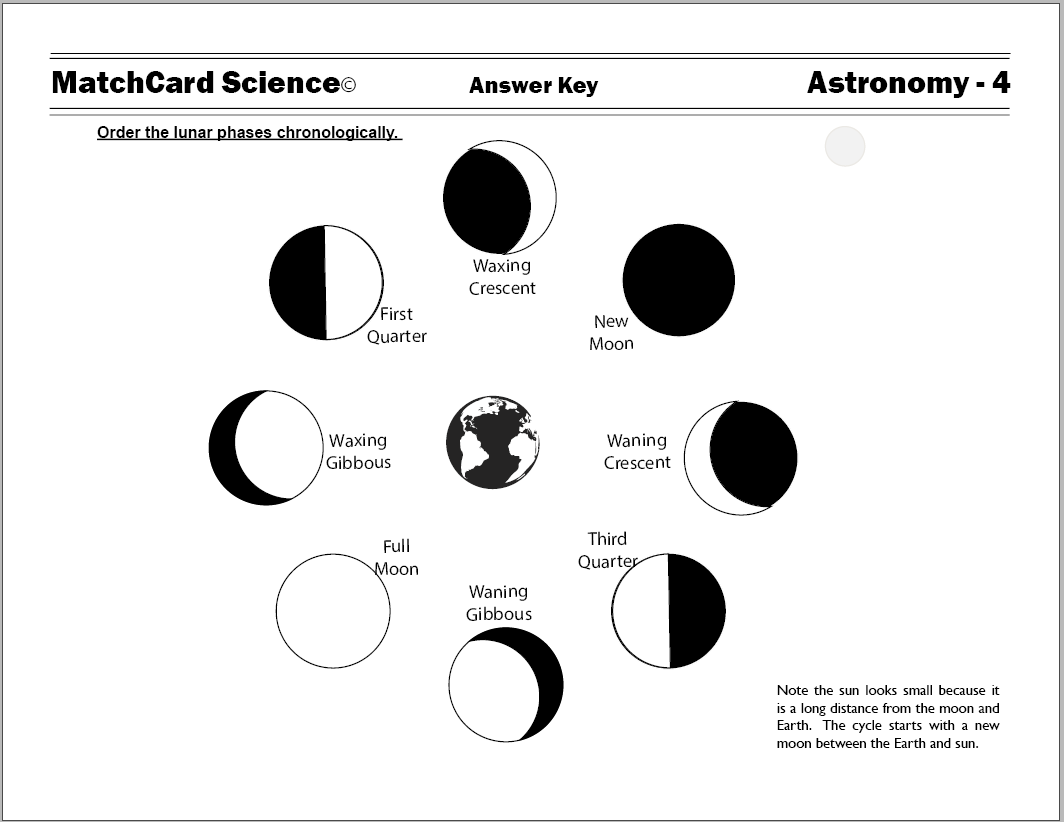

MatchCard #4: Order the lunar phases chronologically and identify the type of moon at any time in the night sky.
Read More: Cycle of the Moon
Lunar Eclipse
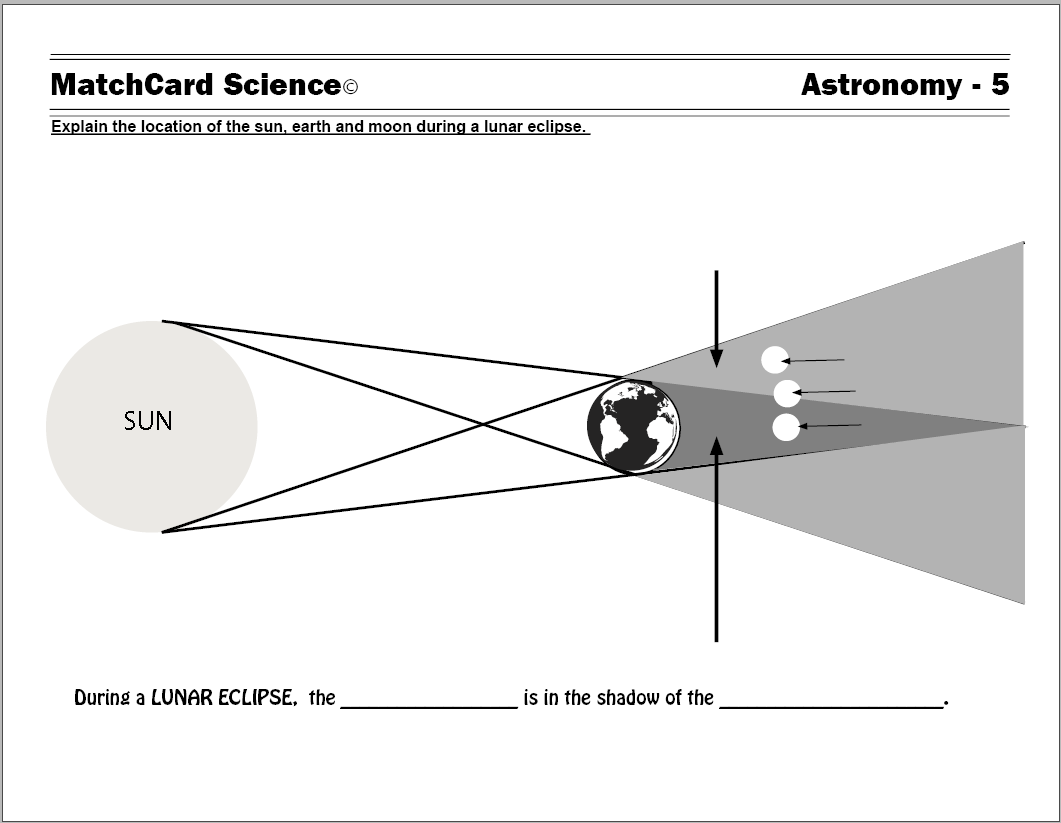

MatchCard #5: Explain the location of the sun, earth and moon during a lunar eclipse.
Read More: Cause of a Lunar Eclipse
Solar Eclipse
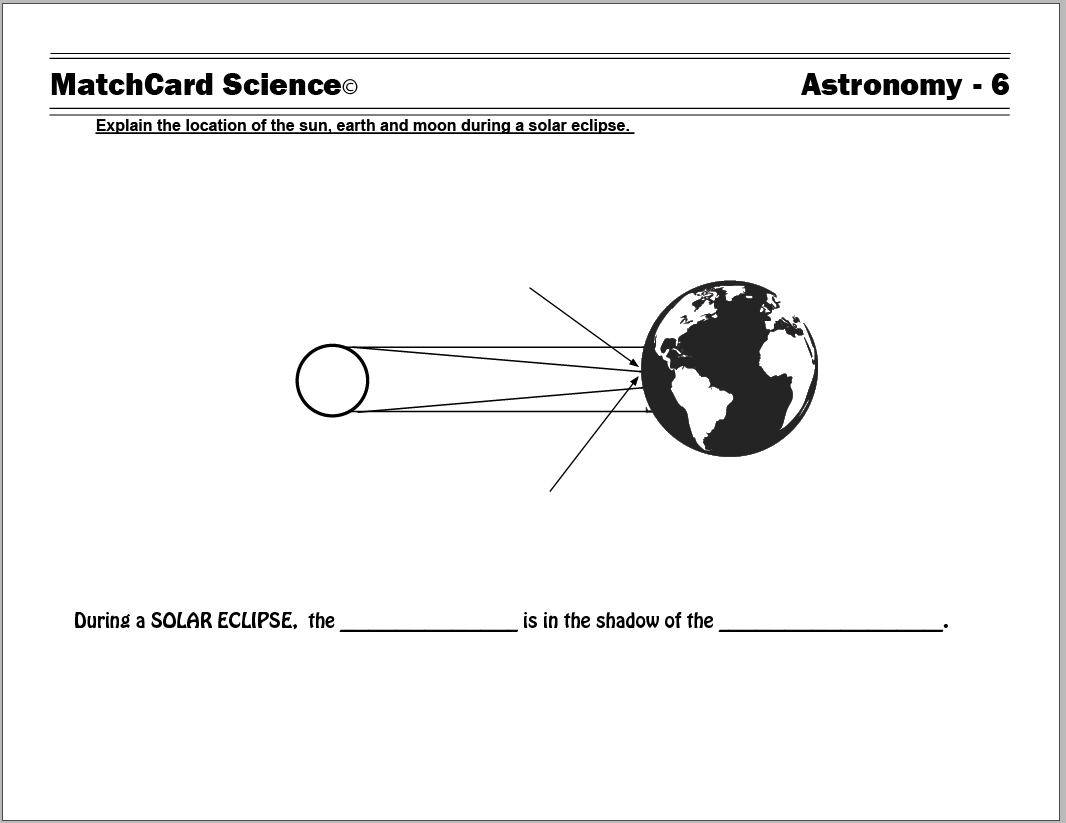

MatchCard #6: Explain the location of the sun, earth and moon during a solar eclipse.
Read More: Solar Eclipse
Composition of the Sun
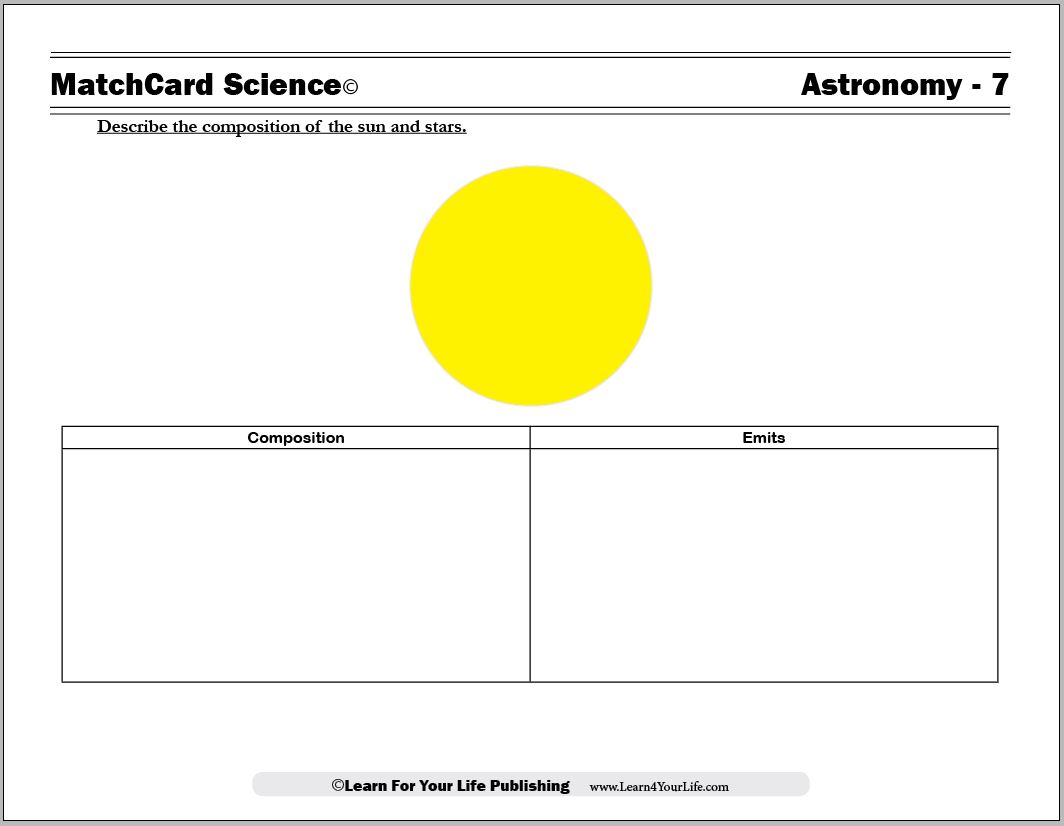

MatchCard #7: Describe the composition of the sun and stars.
Read More: The Sun's Composition
NorthStar, Big Dipper, Little Dipper
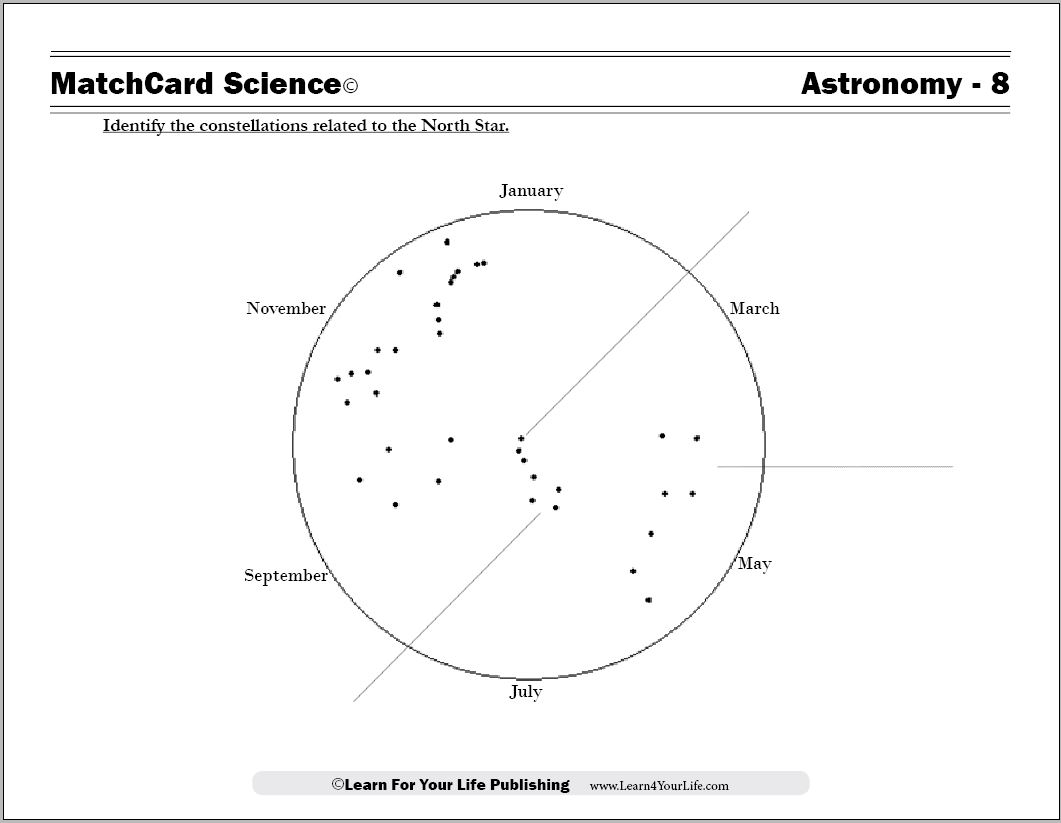

MatchCard #8: Identify the constellations related to the North Star.
Read More: Find the North Star and Constellations
Northern Constellations
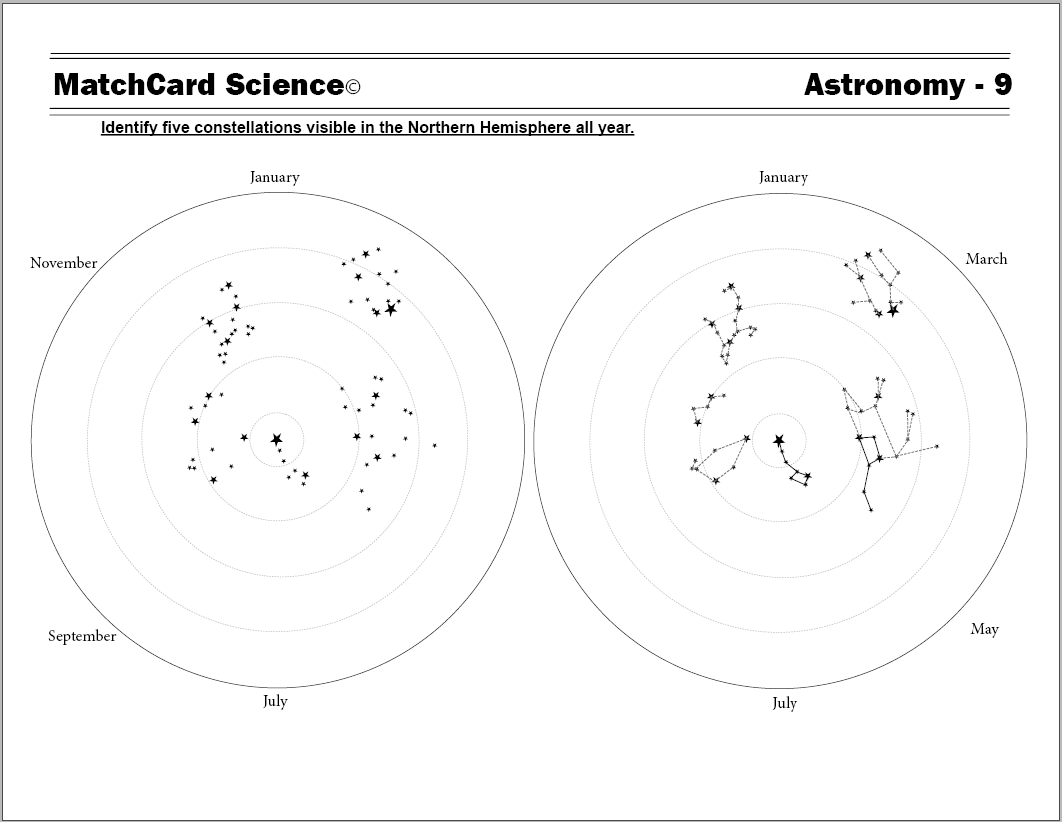

MatchCard #9: Identify five constellations visible in the Northern hemisphere all year.
Read More: Common Constellations
More Stuff In Space: Meteors, Asteroids, and Comets
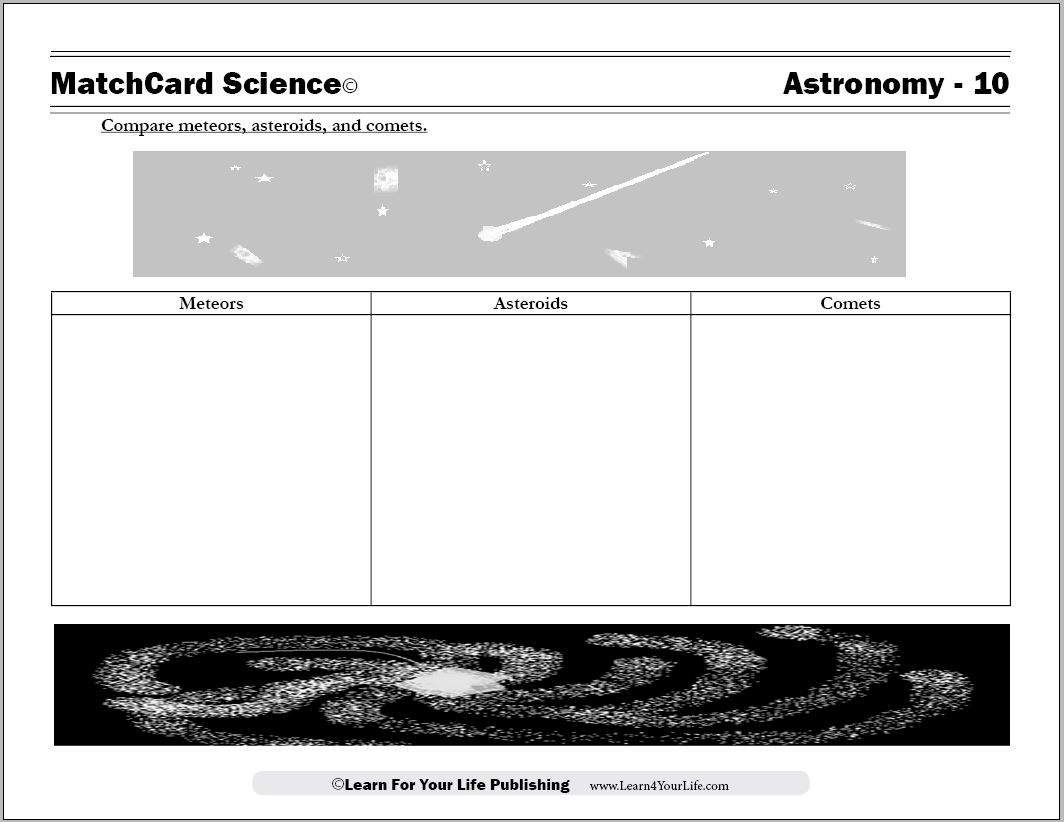

MatchCard #10: Compare meteors, asteroids, and comets.
Read More: Meteors, Comets, and Asteroids
Galaxies Galore
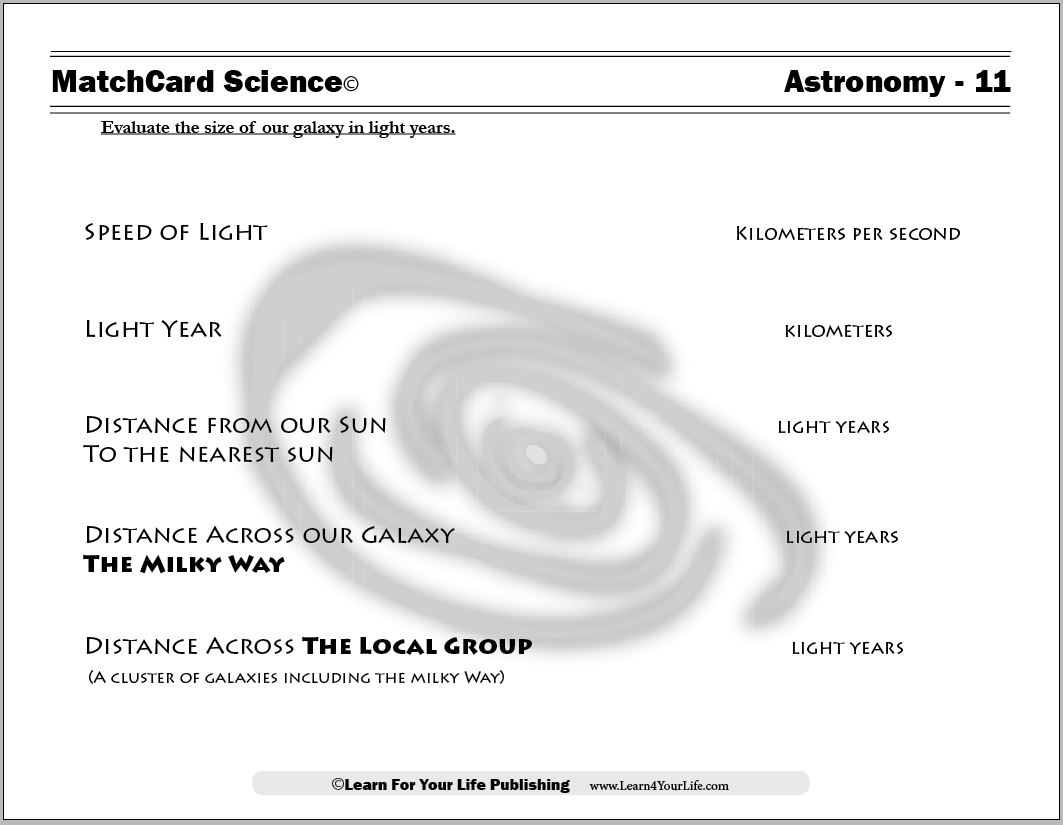

MatchCard #11: Evaluate the size of our galaxy in light years.
Read More: Galaxies
Make Your Own Sky chart and Sextant
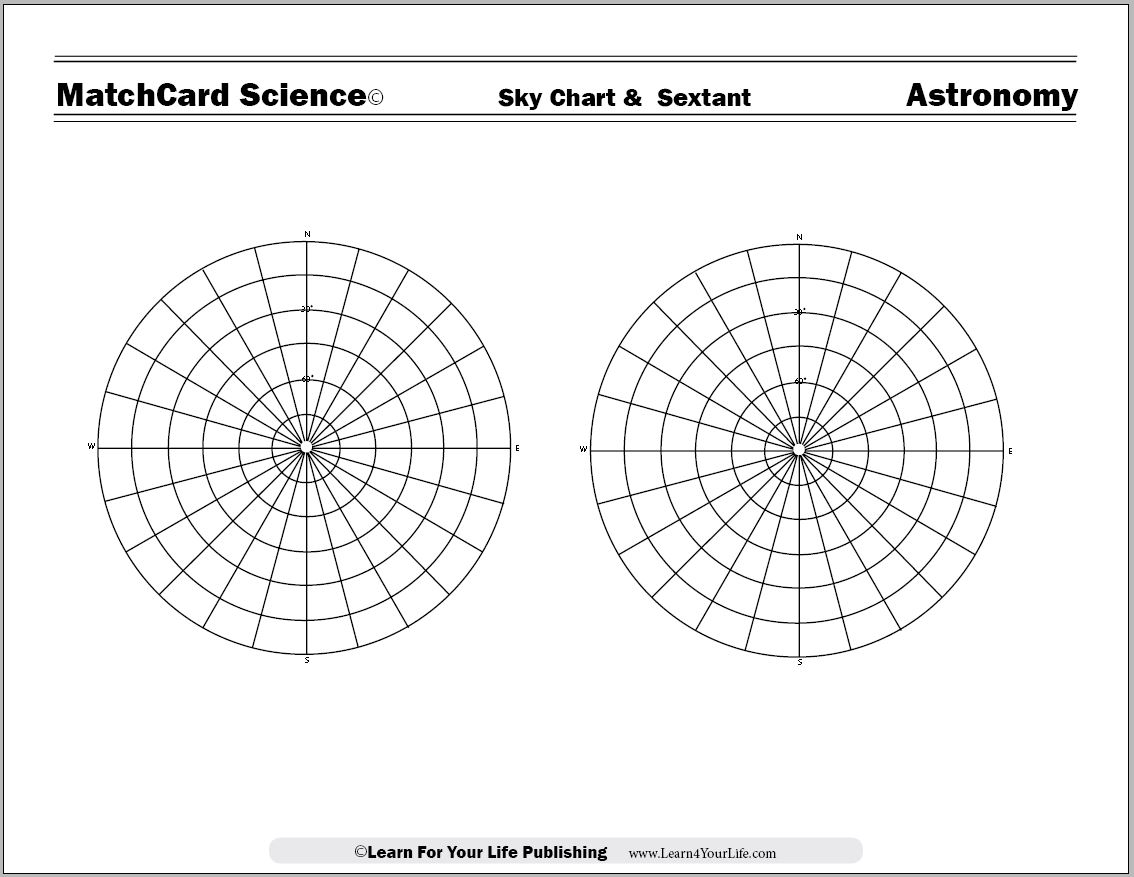
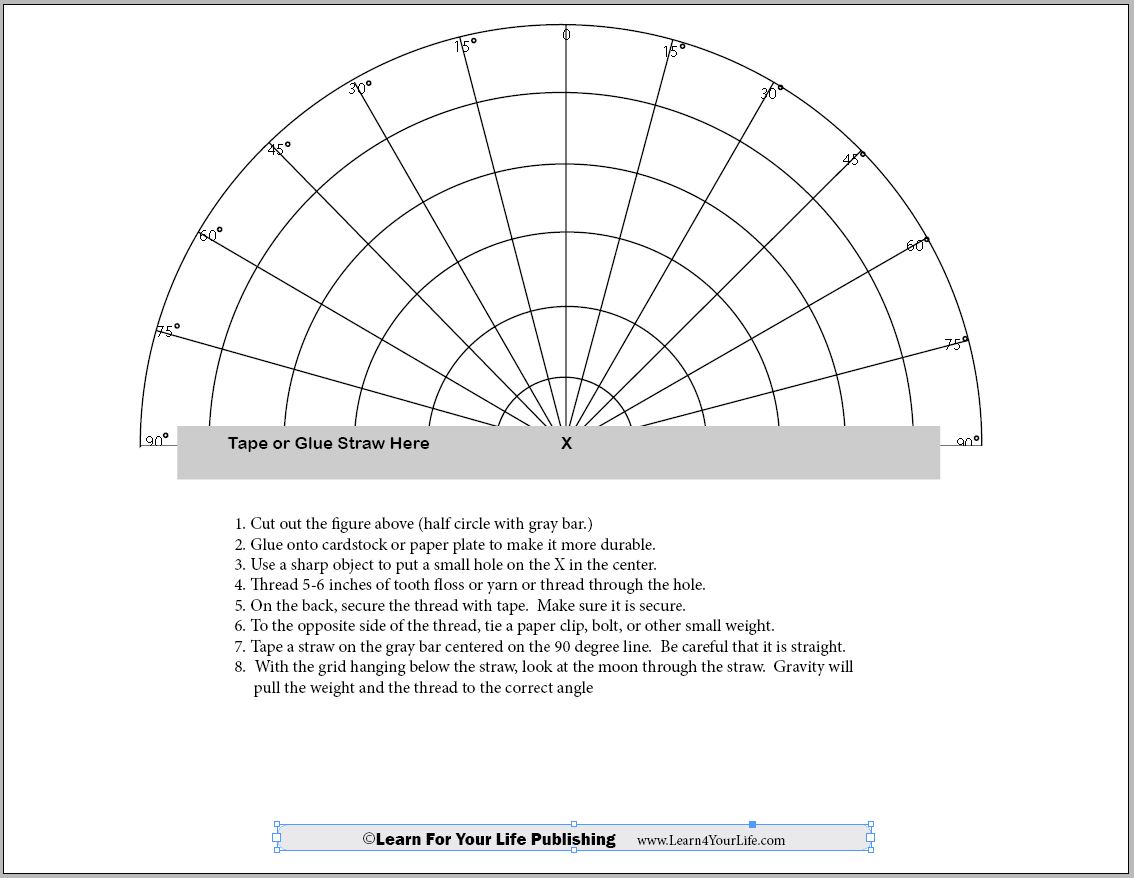

Template to make your own sextant and sky charts
Read More: DIY Sky Charts and Sextants

MatchCard Science
12 Complete Hands-On Unit Studies for Kids
About Our Site
Hands-On Learning












